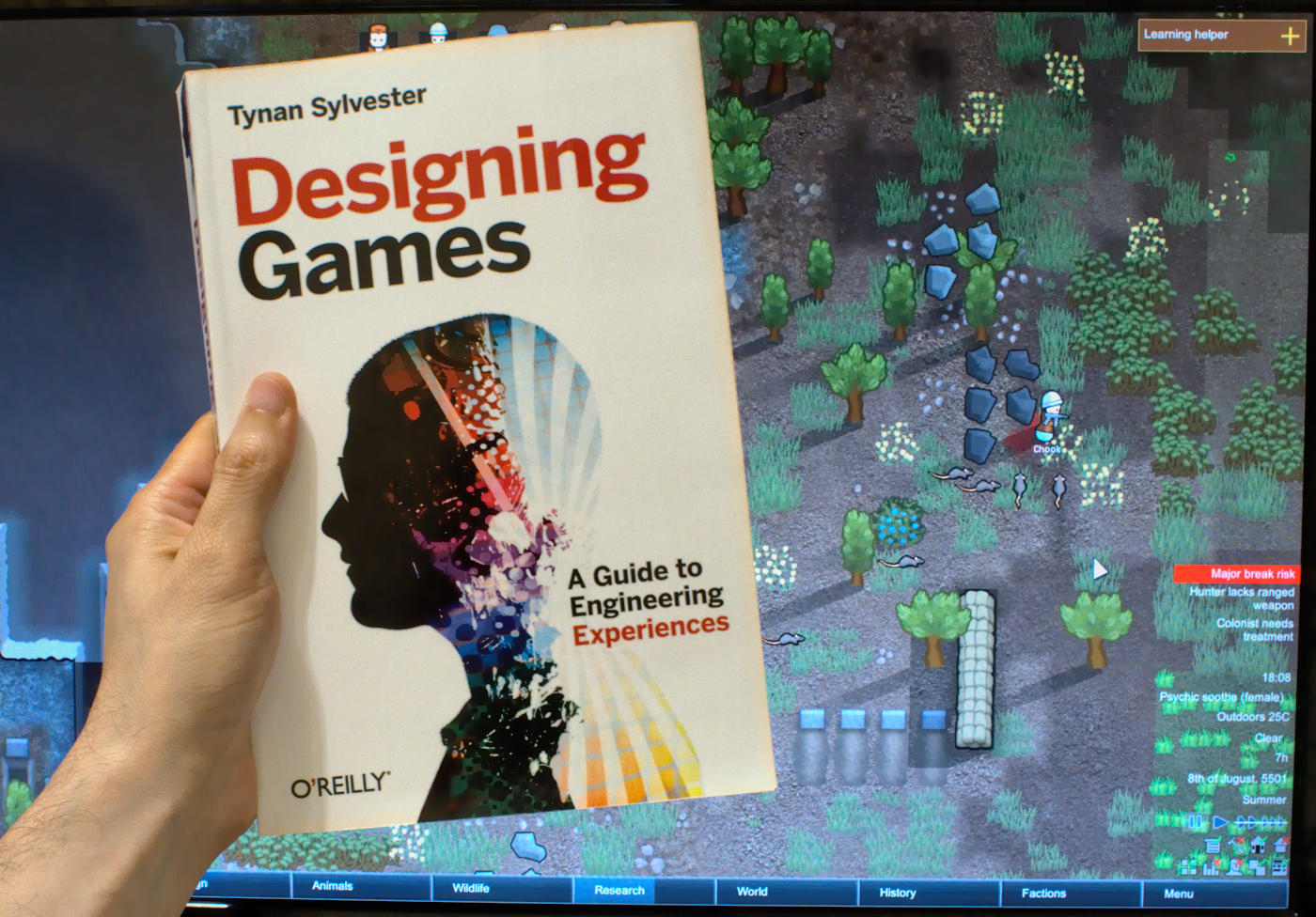Designing Games, by Tynan Sylvester
A book review
Published on September 2, 2018
In a relatively short time, RimWorld climbed to the top of my all-time favorite games (in the company of giants like Civilization IV). When I decided I wanted to learn some game design for real, it was quite natural to start from a book written by the mind behind this gem. So, here’s my review of Tynan Silverster’s Designing Games (O’Reilly, 2013).

Tynan’s fan holding Tynan’s book, with Tynan’s masterpiece in the background.
Designing Games is divided into three parts. The first is a short but important one, in which Tynan goes through topics like game mechanics, human values, emotions, immersion and flow, to conclude with his somewhat unorthodox definition of what a game is: an artificial system for generating experiences.
The second and largest part of the book was precisely what I was looking for: lots of good stuff about crafting games. What are the main points a game designer must pay attention to in order to create a good game? What kind of problems are likely to be found and how to deal with them? How to change a design to make it better? As the author himself says, only experience allows one to properly answer these questions while working on a real game. But the book does an excellent job addressing all these points, while talking about topics like game design elegance, players’ skill, decisions, balancing, multiplayer and player motivation.
The third and final part of Designing Games is about the process of game design: when and how to apply the knowledge and techniques presented in the previous part? How (and how much) to plan? How to know that you are working on the right problems? The central idea here is iteration – and even if this by itself is not new for anyone with some experience in agile software development, all the presentation is very gamedev-centered, focusing on the specificities of this area. I can smell good advice here for everyone, from lone wolves to members of large teams.
The depth of this book impressed me. Tynan doesn’t simply tell us things, he convinces us by the use of real-life examples and a good number of serious academic references. For example, when discussing how to generate emotions for our players, he presents some very interesting studies from psychology (like the bridge experiment, to name one) and discusses how we can leverage this for game design.
He even spends some time deliberating about some very important and less talked about topics, like player fulfillment. Did you ever felt remorse for wasting your time playing some stupid game that’s addictive but doesn’t deliver anything you are really looking for? I did, I know I don’t want to develop this kind of game, and the book gave me good subsidies to understand how to create experiences that matter.
This was the first time I read book about game design with the due attention. While I did a few quick incursions in the game programming world some ten years ago, this is (and has been for a very long time) mostly a hobby for me. Anyway, I am a professional programmer who reads a lot about all sorts of stuff, including game design. I though I knew a thing or two about the subject, however reading this book showed me how clueless I actually was in this subject. Not a good feeling, yet I suppose that’s exactly what I needed. Tynan destroyed my straw house, but also laid the foundations for my brick building.
I absolutely loved this book and recommend it for anyone desiring to delve into game design.
